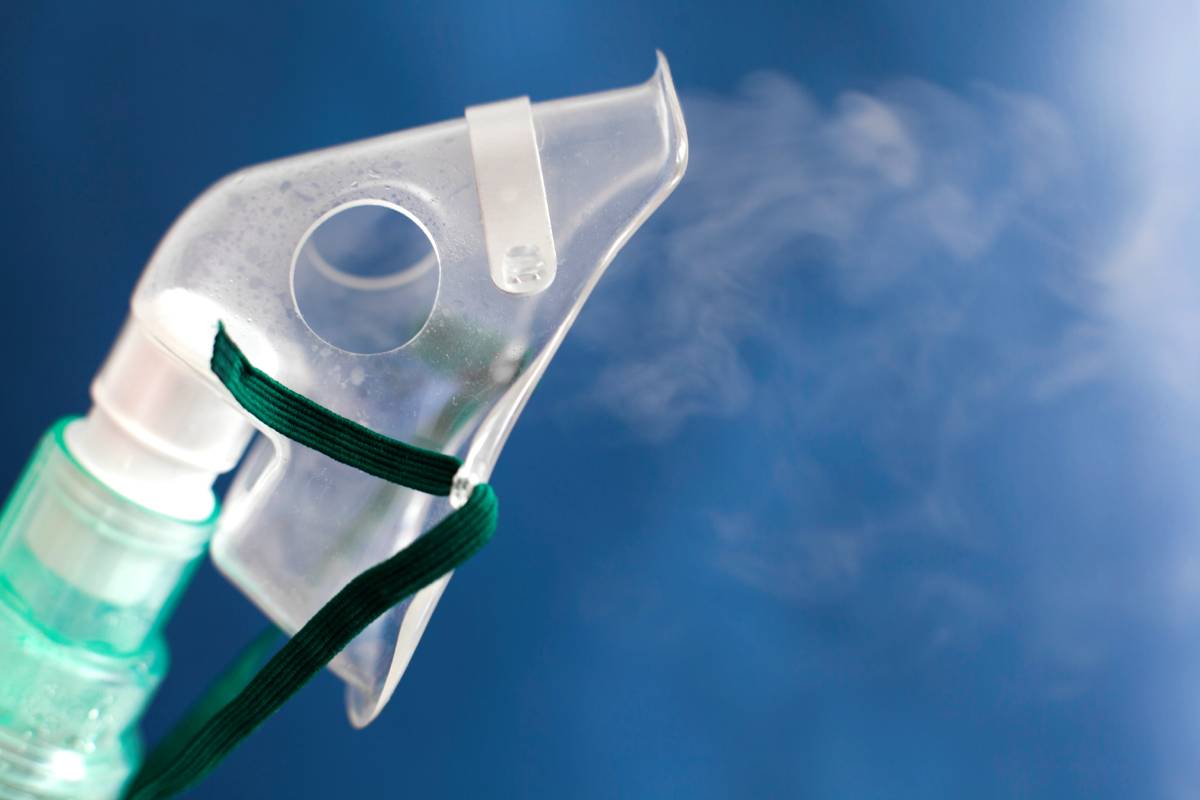Nebulized Anesthesia
September 27, 2024
The bioavailability and efficacy of anesthesia are influenced by the delivery and state of the anesthetic. Topical, syringe, and intravenous delivery of liquid analgesics have long been compared with nebulization therapy in which a facemask or tracheal tube delivers aerosolized anesthesia to the patient for inhalation. Nebulized anesthesia has shown promising characteristics and effects in studies so far. 1, 2
In a study conducted by Müller et al., the efficacy of nebulized lidocaine was compared with topical and syringe-administered lidocaine in sixty patients undergoing a flexible bronchoscopy for the management of pulmonary diseases. Typical pulmonary diseases include airway blockages or inflammation and infection in pneumonia and tuberculosis cases. In thirty patients, topical lidocaine was administered along the upper airway followed by syringe delivery of lidocaine into a channel of the tracheobronchial tree using a bronchoscope. The remaining patients were sedated using nebulized lidocaine, which was delivered into the airway using a distinct spray catheter, Enk Fiberoptic Atomizer Set. In patients sedated with nebulized lidocaine, Müller et al. reported reduced usage of lidocaine along with a superior oxygenation and safety profile. Adverse results were observed when lidocaine was administered topically and with the syringe, due to a higher incidence of incomplete anesthesia. Incomplete anesthesia is a key endpoint measure when assessing the efficacy and bioavailability of an anesthetic. In cases of incomplete anesthesia, poorly sedated patients must be administered higher doses of lidocaine. Higher consumption of lidocaine is a concern for anesthesiologists because of the risk of toxicity. Lidocaine toxicity follows a dose-absorption relationship and has the following systematic effects: depressed heart rate, muscle twitches and methemoglobinemia, where iron is altered by lidocaine, reducing the ability for red blood cells to carry oxygen.3,4
Adverse events are particularly concerning in pediatric patients, making nebulized anesthesia the preferred option in many situations. The type of anesthetic utilized in nebulization therapy impacts the incidence of adverse events. For example, research has shown that nebulized dexmedetomidine reduces the incidence of emergence agitation in pediatric patients. On the other hand, nebulized ketamine contains a preservative benzothonium chloride, which is a potent neurotoxin linked to adverse reactions. This demonstrates that efficacy and bioavailability do not always trend with the appearance of adverse events, a key nuance to consider when selecting the best anesthetic for the patient cohort. In response to this nuance, Liu et al. investigated the effectiveness of a combined approach. Their study found that a combination of ketamine and dexmedetomidine in nebulization therapy provided better sedation and reduced complications when compared to the independent use of nebulized ketamine and dexmedetomidine.
The goals of anesthesia are influenced by several variables. Sedation and adverse events are two critical endpoint measures that anesthesiologists consider when determining the anesthesia approach. For example, when alleviating postoperative sore throat (POST) in patients, research has shown that the pharmacological properties of ketamine lend it an advantage over lignocaine. Symptoms of postoperative sore throat are mediated by aseptic inflammation and infection of the pharyngeal mucosal space. Since ketamine is a potent anti-inflammatory agent which can reduce sepsis and necrosis, due to tissue injury, it is more effective than 4% lignocaine in managing POST symptoms. Moda et al. conclude that preoperative administration of nebulized ketamine is superior to nebulized 4% lignocaine. In this patient cohort, the main endpoint is prophylaxis. As a result, the pharmacological properties of ketamine trump the toxicity profile of its known preservative, benzothonium chloride. 5,6
References
- Smith, Guerin, et al. “General Anesthesia for Surgeons.” StatPearls – NCBI Bookshelf, 5 Aug. 2023, www.ncbi.nlm.nih.gov/books/NBK493199.
- Garg, Rakesh. “Nebulised/Aerosolised Drugs in Anaesthesiology, Critical Care and Pain Practice–benefit With a Professional Hazard!” Indian Journal of Anaesthesia, vol. 68, no. 4, Mar. 2024, pp. 315–16, doi:10.4103/ija.ija_206_24.
- Müller, Tobias, et al. “Nebulization Versus Standard Application for Topical Anaesthesia During Flexible Bronchoscopy Under Moderate Sedation – a Randomized Controlled Trial.” Respiratory Research, vol. 19, no. 1, Nov. 2018, doi:10.1186/s12931-018-0926-5.
- “Lidocaine Can Cause Harmful Effects.” Poison Control, www.poison.org/articles/lidocaine-can-cause-harmful-effects-172.
- Liu, Xiao, et al. “Comparison of the Effects of Ketamine via Nebulization Versus Different Pharmacological Approaches in Pediatric Sedation: A Systematic Review and Meta-analysis of Randomized Controlled Trials.” BMC Anesthesiology, vol. 23, no. 1, Nov. 2023, doi:10.1186/s12871-023-02298-4.
- Moda, Nupur, et al. “Comparison of Preoperative Nebulization With 4% Lignocaine and Ketamine in Reduction of Incidence of Postoperative Sore Throat.” Anesthesia Essays and Researches, vol. 15, no. 3, Jan. 2021, p. 316, doi:10.4103/aer.aer_105_21.